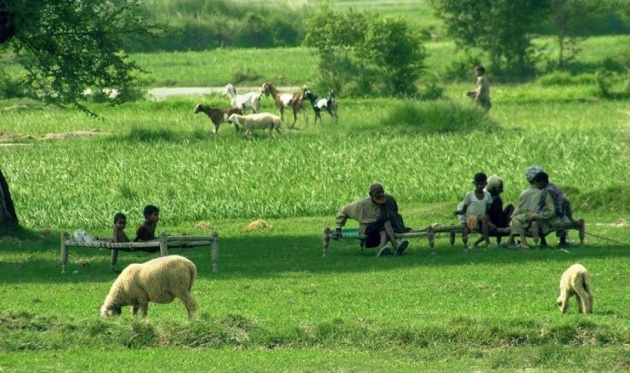There is a growing concern for the preservation of natural resources for future generation as the population on this planet keeps on growing. To feed more people have increased the significance of food production in the arid and semi arid regions that constitute one third of the area on globe. In Pakistan the total available land is 79.61 million hectare (m ha). Only about 25% (20.43 m ha) of land is cultivated hetaerae.
In the process of agricultural development during the past about 60 years, the fertilizer and other technological aspects like use of herbicides for control of weeds and insecticides for insects and pests. These aspects have starded to subside in view of the growing concern about their impact on environment. Worries about the accumulation of nitrates in drinking water and possible pesticides residues in our food supply have perturbed many people to question the value of major tool of modern agriculture. When there is nutrient imbalance in the soil, plants are subject to nutrient stress that results in reduced growth and quality. A nutrient imbalance exists when one or more nutrients are not in balance proportion. This can be caused by a deficiency, a toxic level of one or more nutrients or just an excess of a nutrient that is not toxic but hinders another nutrient form performing its normal function. A constant balanced supply of each element is essential to good plant growth, otherwise nutrient deficiencies toxicities or other effects will cause plant nutrient stress. So soil analysis is an important diagnostic tool for evaluation and solving the problem. However, soil analysis is not at all a panacea. It will not supply answers to unsatisfactory plant growth when the cause is dry weather, compacted soils, critically high or low temperature, inadequate soil drainage, low oxygen in the soil, improper placement of fertilizers, plant disease, insect damage and untimely operations. These probable limiting factors must be considered before soil test can be interpreted for a fertilizer recommendation.
In KPK the use of mineral fertilizers increased steadily after late fifties but is still less than the required quantity with the result that the production is very low. The fertility status of the soils is determined through general level of crop yield, green house experiments, field trials and laboratory analysis. Soil testing is better diagnostic tool that other methods because is provides the basis to determine nutrient needs before the crop is sown. Moreover, being rapid is has advantage over biological methods. 



